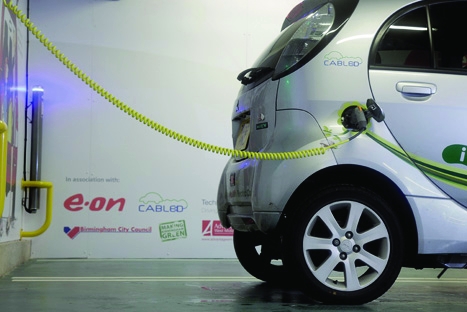A popular New Year pastime is forecasting the year ahead and checking previous predictions against actual outcomes, so for this blog I thought I’d follow this tradition. Over the past three years many companies and organisations have tried to predict the rate of electric vehicle (EV) uptake but only in the last year have sufficient vehicles become available for early take up rates to be assessed. So how accurate have these forecasts been and what do the true figures tell us about our motoring future?
Worldwide, no more than 50,000 plug-in electric cars were sold last year – about 1,000 of these are driving around the UK. That’s not a lot of cars, about 0.06 % of annual new sales in fact. As recently as March 2011 Frost and Sullivan predicted 72,000 sales worldwide and back in March 2010 the Committee on Climate Change predicted a total of 11,000 in the UK by now. An annual production forecast of 150,000 in April 2011 by PwC was probably a factor of three too optimistic.
Of course these are very early days and uptake is currently limited by supply rather than consumer demand. Only a few OEMs currently have vehicles available for purchase and some of these have had to overcome early distribution and production problems. Several other manufacturers will bring models to the market in 2012. Forecasting the very early stages of deployment was always going to be difficult. So what if we look a bit further ahead? Say, 2020? Well, the ‘average’ prediction is for about 8% of sales worldwide. But the spread is considerable, with many predictions below 3% and some in excess of 20%. If you plot the predictions for 2020 against the date the prediction was made, you can argue that the trend of the last 3 years is a reducing expectation of market penetration. Interestingly, if you sum each country’s national target you get to about 8%. If you sum all manufactures production targets, you get less than 2%. One thing is clear, that there is still little consensus. The most recent forecasts still range from 1% to 15%.

Part of the problem is chickens and eggs, or cars and charging posts. Who will buy a £25,000 car when there is nowhere to charge it? Who will pay the same amount for a few charging posts when there is no-one to use them? The UK government is seeking to accelerate the infrastructure deployment by subsidising publicly accessible posts in its selected ‘Plugged-in-Places’ locations. But it is also relying on employers to install charging posts at workplaces. It is not clear why an employer would choose to do this as there is no practical means of recovering the installation costs – and no employee expectation of charging post provision. What is even less clear is how you might try and predict the outcome of this dynamic 8 years hence.
The other significant influencing factor will be cost – vehicle sticker price and total cost of ownership. Purchase price is expected to reduce slowly with battery costs predicted to fall from about $1000 per kWh to between $290 and $650 in 2020. But relative ownership cost (compared to petrol / diesel vehicles) is a very strong function of oil price, the price of carbon and tax policy. Who would like to predict any of those, let alone all of them, more than a year or so ahead? What we do know, is that in Europe, fuel taxes are higher, environmental legislation is stronger, and driving distances are shorter (compared to the US at least). These factors, combined with strong government support, are likely to lead to a faster rate of take up in Europe than elsewhere. Predictions for the UK and France, which both provide EV purchase subsidies, average out at about 14% of sales in 2020, nearly double the worldwide penetration.
As ever, the great unknown is China. It overtook the US market for passenger cars in 2009 and an EV favourable policy decision in China could lead to huge local demand, most likely served by local OEMs.
So it is little wonder that forecasts vary so greatly. Vehicle supply will increase significantly in 2012 and by the end of the year we might know more about consumer reaction to this new technology. The only thing I would confidently predict is an enduring lack of confidence in take up forecasts. A few OEMs have made billion dollar bets on EVs; they will have to wait a few more years before they find out if they have backed a winner.





Project to investigate hybrid approach to titanium manufacturing
What is this a hybrid of? Superplastic forming tends to be performed slowly as otherwise the behaviour is the hot creep that typifies hot...